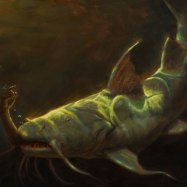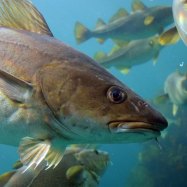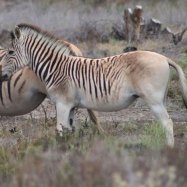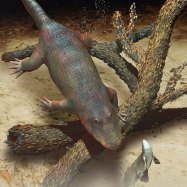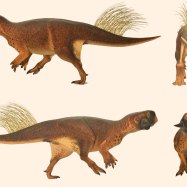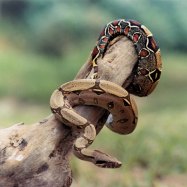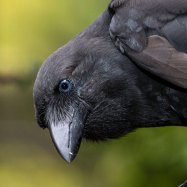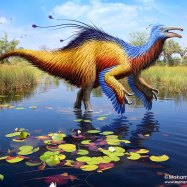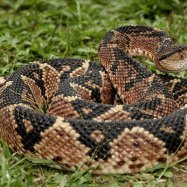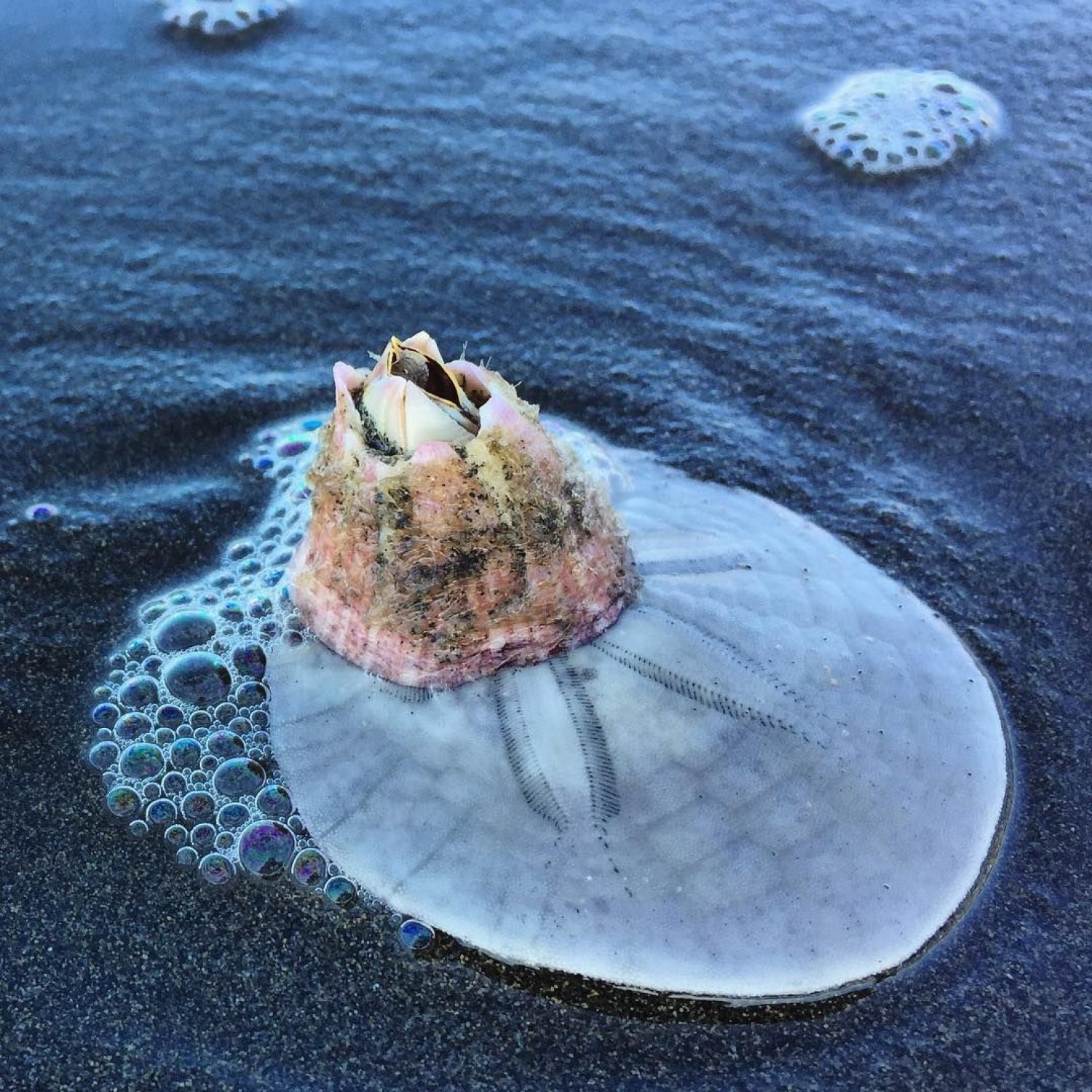
Sand Dollar
2 to 4 inches (5 to 10 cm)
Meet the sand dollar, a unique marine animal found on the ocean floor. These flat and circular creatures belong to the Clypeasteridae family and can grow up to 2 to 4 inches (5 to 10 cm) in length. With their stunning star-like pattern, they are a favorite among shell collectors. Next time you're strolling on the beach, keep an eye out for these fascinating creatures! #SandDollar #OceanTreasures #BeachWalks
Animal Details Summary:
Common Name: Sand Dollar
Kingdom: Animalia
Habitat: Subtidal and intertidal zones of sandy or muddy beaches
The Fascinating World of Sand Dollars: A Hidden Treasure of the Ocean
The ocean is a vast and mysterious place, full of wonderous creatures and hidden treasures. One such treasure is the magnificent sand dollar, also known by its scientific name Echinarachnius parma. This unique and fascinating creature has captured the curiosity of scientists and beachcombers alike, and in this article, we will delve into the world of sand dollars to discover what makes them truly special.The Basics of Sand Dollars
Sand dollars, also called sea cookies or cake urchins, are marine invertebrates belonging to the phylum Echinodermata, which means "spiny skin Sand Dollar." These creatures are closely related to sea stars, sea urchins, and sea cucumbers and have a distinct body shape that sets them apart.Anatomy and Physical Characteristics
The sand dollar's scientific name Echinarachnius parma is derived from the Greek words "echinos" meaning hedgehog, "arachne" meaning spider, and "parma" meaning shield. This name accurately describes the appearance of this fascinating creature. A fully grown sand dollar can reach a size of 2-4 inches (5-10 cm) in diameter and has a flat and circular body covered in tiny spines.Sand dollars have a unique feature, which is their five-fold radial symmetry, meaning that their bodies can be divided into five equal sections, much like a starfish. However, their most striking characteristic is the distinct design on their bodies, which resembles a five-petaled flower or the sun.
Feeding and Habitat
Sand dollars are found in the shallow waters of tropical and temperate regions worldwide, primarily in the intertidal and subtidal zones of sandy or muddy beaches. They are skilled suspension feeders, which means they use their tiny spines and tube feet to capture food particles from the water. Their diet consists of plankton, algae, and detritus, making them crucial to the ocean's ecosystem Schnoodle.The Mystery of Sand Dollar Coloration
One of the most intriguing things about sand dollars is their changeable coloration. When alive, sand dollars have a yellowish-green, purple, or reddish-brown color. However, when they die, they often wash up on the shore as white skeletons. Scientists believe that this change in color occurs due to the loss of skin pigment after death or during the bleaching process caused by sunlight.Rare and Beautiful Species of Sand Dollars
While most sand dollars are known for their white skeletons, there are a few rare and stunning species that have unique colors and patterns. One such species is the deep-water pink sand dollar, found in the Pacific Ocean, which has a beautiful pink hue. Another rare species is the golden sand dollar, which can be found in the Gulf of Mexico, and features a stunning golden color.Interesting Facts About Sand Dollars
- Sand dollars are one of the few species that reproduce once a year, usually in early spring.- The five petals on a sand dollar's body are actually used for breathing, eating, and locomotion.
- Sand dollars are incredibly resilient and can survive in the wild for up to ten years.
- They are considered spiritual symbols in some cultures and are often gifted for good luck and prosperity.
The Role of Sand Dollars in the Ocean Ecosystem
Aside from being a fascinating creature, sand dollars play a crucial role in maintaining the balance of the ocean's ecosystem. As suspension feeders, they help keep the water clean and healthy by consuming plankton and algae. Additionally, their skeletons provide a habitat for small marine creatures, making them essential to the ocean's biodiversity.Threats and Conservation Efforts
Unfortunately, like many other marine creatures, sand dollars face several threats to their survival. Human activities such as overfishing, pollution, and climate change have had a severe impact on their populations. Sand dollars are also often collected as souvenirs, which can harm their populations.To protect and conserve these magnificent creatures, several organizations, along with the help of local communities, have taken various measures, such as promoting responsible fishing practices, reducing plastic pollution, and creating marine protected areas, to name a few.
Conclusion
The sand dollar's beauty and mystery have made it a popular subject in literature and art, often symbolizing peace, prosperity, and spiritual beliefs. While it may seem like a simple and unremarkable creature, the sand dollar holds several secrets that have captivated the human imagination for centuries. With their striking designs, unique anatomy, and essential role in the ocean's ecosystem, sand dollars are truly a hidden treasure of the ocean that deserves our respect and admiration.

Sand Dollar
Animal Details Sand Dollar - Scientific Name: Echinarachnius parma
- Category: Animals S
- Scientific Name: Echinarachnius parma
- Common Name: Sand Dollar
- Kingdom: Animalia
- Phylum: Echinodermata
- Class: Echinoidea
- Order: Clypeasteroida
- Family: Clypeasteridae
- Habitat: Subtidal and intertidal zones of sandy or muddy beaches
- Feeding Method: Suspension feeder
- Geographical Distribution: Primarily found in the shallow waters of tropical and temperate regions
- Country of Origin: Worldwide
- Location: Ocean floor
- Animal Coloration: Varies from light to dark brown or purplish-black
- Body Shape: Flat and circular
- Length: 2 to 4 inches (5 to 10 cm)
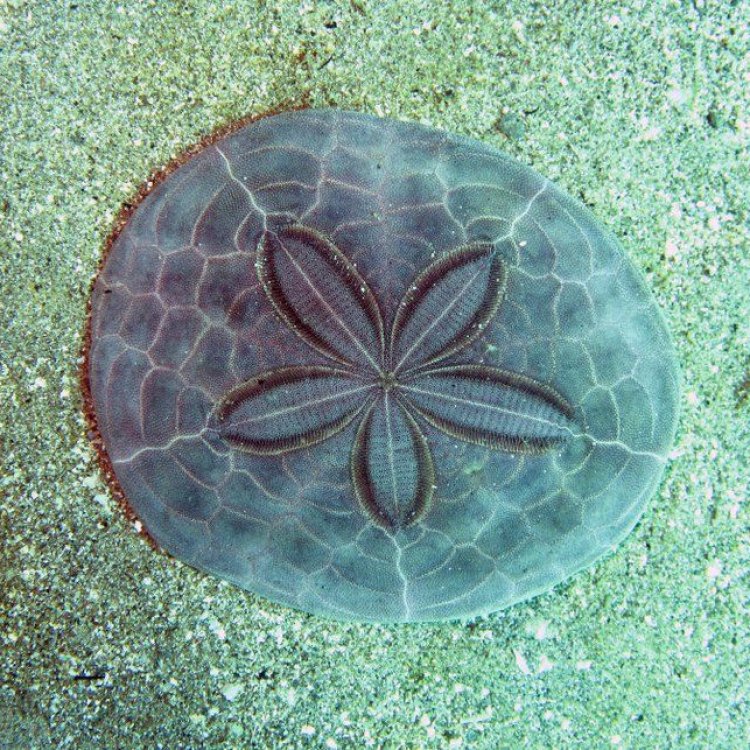
Sand Dollar
- Adult Size: Up to 3 inches (7.5 cm) in diameter
- Average Lifespan: 10 to 15 years
- Reproduction: Sexual reproduction
- Reproductive Behavior: External fertilization
- Sound or Call: No
- Migration Pattern: Non-migratory
- Social Groups: Solitary
- Behavior: Burrows in the sand or mud
- Threats: Predation, human activity
- Conservation Status: Not evaluated
- Impact on Ecosystem: Filter feeder, helps maintain balance in the ecosystem
- Human Use: Collected as souvenirs and used for crafts, aquarium trade
- Distinctive Features: Characteristic radial pattern on the upper surface
- Interesting Facts: They are not actually related to true dollars or currency
- Predator: Various marine animals such as sea stars and fish
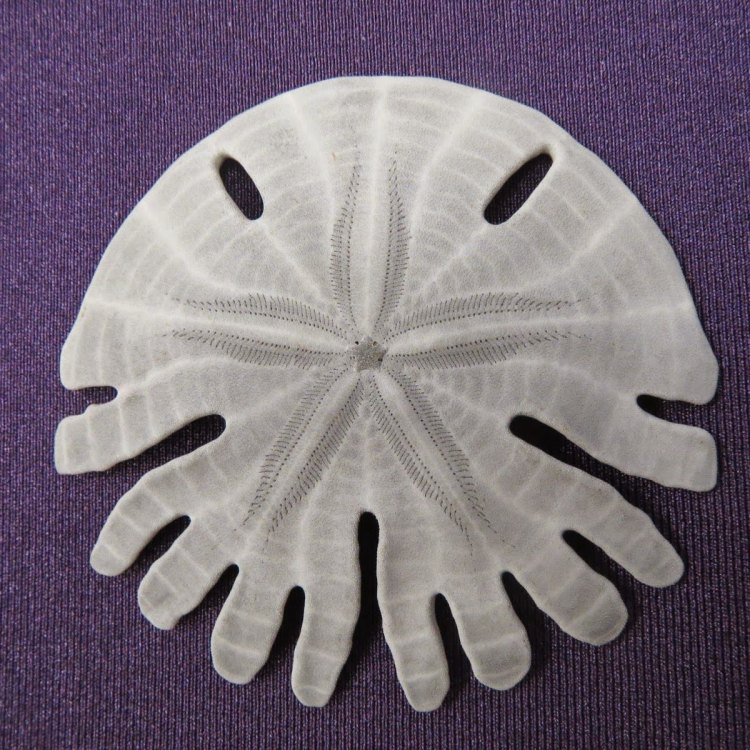
Echinarachnius parma
The Fascinating World of Sand Dollars: Unique Features and Importance in Ecosystem
Have you ever walked along a beautiful sandy beach and spotted a round, flat, and white object partially buried in the sand? Chances are, you have come across a sand dollar - one of the most fascinating and unique marine creatures found in the oceans around the world. These sea creatures may look like simple shells, but they are much more than that. In this article, we will delve into the world of sand dollars, exploring their distinctive features, behavior, and importance in the ecosystem.Sand dollars, also known as sea cookies or pansy shells, belong to the class Echinoidea and are closely related to sea urchins and starfish PeaceOfAnimals.Com. They are commonly found in temperate and tropical waters, from the intertidal zone to depths of around 100 feet. While there are over 70 species of sand dollars, they all share similar characteristics and habits.
One of the first things that may catch your eye when you see a sand dollar is its size. These creatures can grow up to 3 inches (7.5 cm) in diameter, making them larger than a typical silver dollar. However, their size can vary depending on the species, with some reaching up to 6 inches (15 cm) in diameter. Despite their relatively small size, sand dollars can live up to 10 to 15 years, with some even living up to 20 years in the right conditions.
So what sets sand dollars apart from other marine creatures? One distinctive feature of sand dollars is their characteristic radial pattern on the upper surface, which resembles a flower when viewed from above. This pattern is created by a series of tiny holes or pores, through which the sand dollar's tube feet extend Siberian Husky. These feet are used for movement and feeding, and they also play a crucial role in their reproduction process, which we will discuss later.
Sand dollars are also known for their interesting reproductive behavior. They reproduce sexually through a process known as external fertilization. During this process, male sand dollars release their sperm into the water, which is then drawn in by the female's tube feet. The sperm fertilizes the eggs, and the resulting larvae are then released into the ocean.
However, reproduction for sand dollars is not as simple as it seems. In order to increase the chances of fertilization, sand dollars have to engage in a behavior known as "sand dollar pancakes." This involves large groups of sand dollars gathering and lining up their bodies close to one another, forming a pancake-like shape on the ocean floor. It is believed that this behavior helps create a better chance for sperm and eggs to meet, leading to successful fertilization. This behavior is also thought to play a vital role in the survival of the species, as it allows for genetic diversity and prevents inbreeding.
Despite their interesting reproductive behavior, sand dollars do not make any sound or call. They are relatively quiet creatures, as their hard outer shells prevent any vocalizations. In fact, sand dollars have no true organs, including a brain or nervous system, which makes them unable to produce any sound.
Sand dollars are known to be non-migratory and tend to live their entire lives in one location. This is because they are adapted to living in a specific habitat, and moving to a new area can be challenging for them. These creatures tend to be solitary and can often be found burrowing in the sand or mud, with only their upper surface visible. This allows them to hide from predators and protect their delicate bodies.
Speaking of predators, sand dollars are not completely defenseless. They have a hard, spiky outer shell made up of calcium carbonate that can provide protection against potential threats. However, their primary defense mechanism is their ability to burrow into the sand or mud, making it difficult for predators to reach them. Unfortunately, sand dollars are still preyed upon by various marine animals, including sea stars, fish, and crabs.
Aside from natural predators, sand dollars also face numerous threats from human activities. One of the main threats to their population is the collection of sand dollars for souvenirs and crafts. While it may seem harmless, this practice can have a significant impact on the species, especially if collected in large numbers. Additionally, sand dollars are also often used in the aquarium trade, where they may not receive the necessary care and suffer from stress and disease.
Due to these various threats, it is surprising that the conservation status of sand dollars is currently not evaluated by the International Union for Conservation of Nature (IUCN). However, their important role in maintaining balance in the ecosystem cannot be overlooked. Sand dollars are filter feeders, meaning they use their tube feet to capture and bring food particles to their mouth. In doing so, they help remove excess algae and other organic material from the water, which is crucial for maintaining the health and balance of the ecosystem.
Besides its significance in the ecosystem, sand dollars also hold cultural and economic value for humans. As mentioned earlier, these creatures are commonly collected as souvenirs or used in crafts. Their beautiful radial patterns and intricate designs make them popular among beachgoers, and they are also used in jewelry and home decor. However, it is important to remember the impact of our actions on these creatures and their habitat, and to take only a few as souvenirs, if any at all.
In conclusion, the world of sand dollars is just as fascinating as it is unique. These creatures may be small, but they play a significant role in maintaining balance in the ocean ecosystem. From their remarkable reproductive behavior to their interesting physical features, sand dollars have so much to offer. So next time you spot one on the beach, take a moment to appreciate these amazing creatures and remember their importance in our oceans.
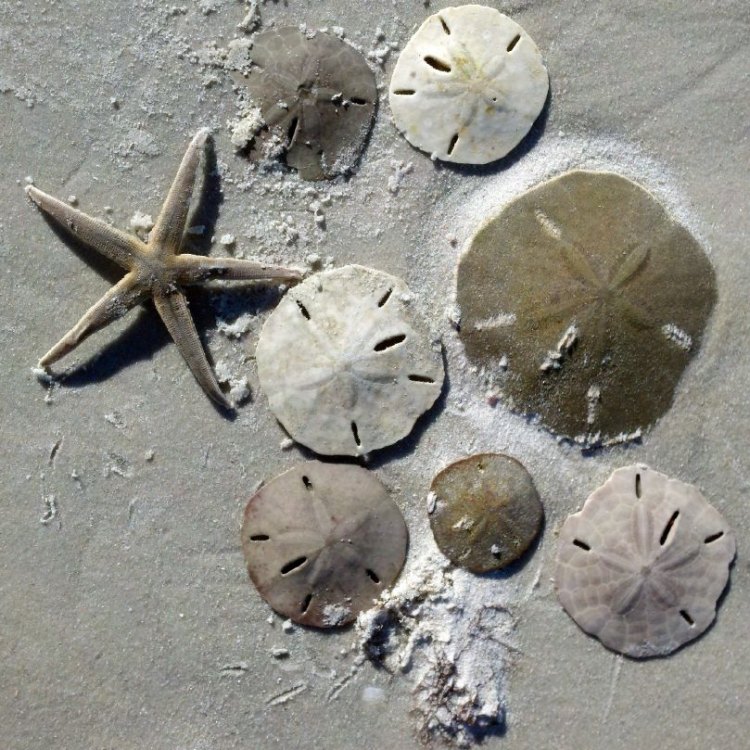
The Fascinating World of Sand Dollars: A Hidden Treasure of the Ocean
Disclaimer: The content provided is for informational purposes only. We cannot guarantee the accuracy of the information on this page 100%. All information provided here may change without prior notice.

